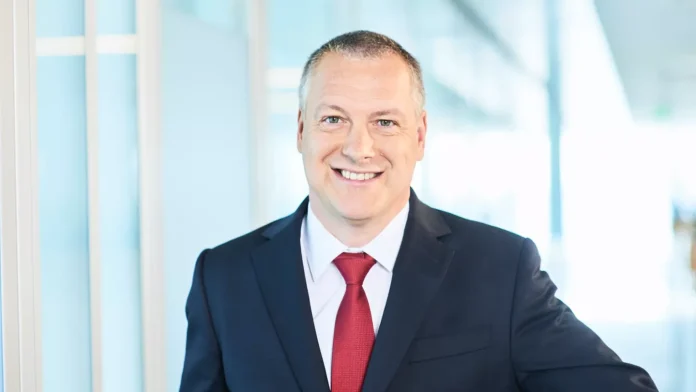
Andreas Schierenbeck
CEO of Hitachi Energy
Two years ago at COP28, we agreed to triple global renewable energy generation by 2030. It was the first time at a COP where there was collective, formal recognition that the world must transition away from fossil fuels in our energy systems, in a just and equitable manner.
That milestone and the progress it has driven since should be celebrated. Renewables are soaring, recently overtaking coal as the world’s primary source of electricity and moving us forward towards net zero. To put the scale in perspective, increased global renewable generation for the next five years is expected to total 4,600 GW, equal to the combined installed power capacity of China, the European Union and Japan.
At COP30, we are finally beginning to discuss the biggest challenge to the energy transition – our electricity grids. Our grid infrastructure has faced underinvestment for many years. Now, the ageing grid, designed as a one-way system to utilize and transport historical energy sources, is not capable of harnessing the renewable energy we’re creating.
Grid congestion and connection delays have emerged as bottlenecks across multiple markets – from old equipment causing outages in North America, to curtailment of wind and solar energy in the UK and Europe, to long-distance transmission challenges in Asia and Latin America.
Changing the Conversation
This isn’t new for our industry. According to the International Energy Agency (IEA), reaching national energy goals requires adding or refurbishing a total of over 80 million kilometers of grids by 2040, the equivalent of the entire existing global grid.
Last week also saw the IEA release its 2025 World Energy Outlook. Going back just five years, in 2020 grids and related topics were just over 15% of what that report discussed. Now it’s just under 40% of what the industry’s main international body is talking about.

But outside our industry, the picture isn’t yet as widely appreciated. Even though COP29 elevated transmission infrastructure to be a central pillar of the climate agenda through the Global Energy Storage and Grids Pledge, there is still work needed to build the urgency that leads to progress.
Adaptation and Resilience
Adaptation has become a more tangible part of climate discussions this week, and rightly so. It does not mean accepting defeat on mitigation. But the real impact of climate change is impossible to ignore, as we face the fallout of storms like Hurricane Melissa in the Caribbean, continued food security challenges in Africa, or even the hot conditions delegates face in Belém.
The grid is central to adaptation. First, nearly all adaptation technologies – heating/cooling, irrigation, water treatment, early-warning systems, and digital infrastructure – require reliable and secure electricity.
Second, climate change is already putting the grids which we rely upon under intense stress. Countries need to design, harden, and modernize their electricity networks for resilience to withstand these impacts. The EU’s Adaptation Strategy for example, explicitly names grid resilience as important to adaptation.
Third, grids are how most people will access electricity affordably, reliably – and fairly. If grids fail under extreme weather, and more of our lives depend on everything powered by electricity, the consequences of grids failing affect more lives. Grid resilience equals societal resilience.
Technology is Ready
The good news for COP30 is the technology to modernize the grid and deliver a clean, resilient energy future already exists.
High-voltage direct current (HVDC) can move huge volumes of renewable power over long distances with minimal losses. Digital grids, powered by AI and real-time data, make networks smarter, more flexible, and more efficient – ensuring energy flows where and when it’s needed. And innovations like our EconiQ portfolio eliminates SF₆, reducing greenhouse gas emissions across the grid’s lifecycle.
Collaboration for Progress
Despite some negativities around COP this year, our team is reporting a positive and collaborative atmosphere among stakeholders. There is a practical reality to the challenges we face: they are already here, and we need to address them.
At Hitachi Energy, we have 50,000 colleagues across 60 countries bringing reliable power to more than three billion people every day. We are investing more than $9 billion across our company and supply chain to help modernize the grid, and are creating 15,000 new skilled roles worldwide.
From Challenge to Opportunity
Every kilometer of new transmission line represents cleaner air, stronger economies, and new jobs.
Despite challenges, I am encouraged by what we are hearing at COP30. When we talk about the importance of the grid, most are interested to learn more. There will be no transition without transmission, which is why placing it at the heart of conversations in Belém is vital to our progress.




